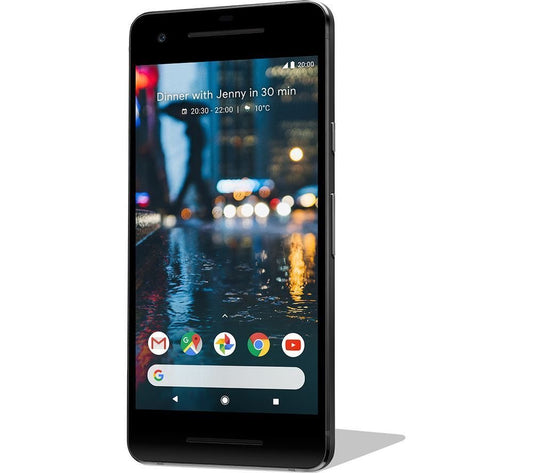Frequently Asked Questions
1. What is A/B testing?
2. Why is A/B testing important for e-commerce?
3. How do I set up an A/B test?
4. What metrics should I analyze after an A/B test?
5. What common pitfalls should I avoid when conducting A/B tests?
A/B testing has become an essential part of digital marketing and product optimization. When done right, it helps in understanding user behavior, improving conversion rates, and maximizing customer engagement. In this blog, we will delve into the fundamentals of A/B testing and how to root it for improved performance, allowing you to harness its full potential for your Shopify store.
Understanding A/B Testing
A/B testing, also known as split testing, involves comparing two versions of a web page or an app feature to see which outperforms the other in terms of conversion rate or user engagement. It usually involves changing a single element—like a call-to-action button, a header, or the color scheme—and then analyzing which version yields better results.
The Importance of A/B Testing in E-Commerce
In the competitive world of e-commerce, A/B testing allows you to make data-driven decisions. Here are a few reasons why A/B testing is pivotal for your Shopify store:
- Enhances User Experience: By testing different design elements, you can determine what resonates with your target audience to create a more enjoyable shopping experience.
- Increases Conversion Rates: A small tweak can lead to significantly higher conversion rates, turning casual visitors into paying customers.
- Reduces Bounce Rates: A/B testing helps identify elements that may be causing users to leave your site too quickly, hence reducing bounce rates.
- Gathers Valuable Insights: It provides insights into customer preferences and behaviors, enabling you to tailor your offerings accordingly.
Setting Up Your A/B Testing
Before diving into A/B testing, it’s crucial to set clear objectives and identify what you want to test. Here’s how you can get started:
Define Your Goals
Setting specific goals will guide your A/B testing efforts. Are you hoping to increase sales, reduce cart abandonment, or improve newsletter sign-ups? For instance, if you’re selling accessories for the OnePlus 7T, your goal might be to boost add-to-cart conversion rates for that specific product line.
Select the Element to Test
Focus on one variable at a time for effective results. Here are some elements you might consider testing:
- Headlines: Engaging titles draw visitors in.
- Call-to-Action Buttons: Test different texts and colors.
- Images: Assess the impact of product images versus lifestyle images.
- Layout: Experiment with different page designs and structures.
Choose Your Sample Size
Selecting the right audience for your test is crucial. A/B testing on a larger sample size results in more reliable data. Make sure to consider your traffic; for example, if you have a robust traffic flow from users interested in Xiaomi products, you could run a test directed towards their demographic interests.
Executing Your A/B Test
Once you've set the framework, it’s time to implement your test. Here’s how to do it:
Utilize A/B Testing Tools
Several tools can facilitate your A/B testing efforts. Some popular platforms include:
- Google Optimize: A free tool that integrates well with Google Analytics.
- Optimizely: A leading experimentation platform for experienced users.
- VWO (Visual Website Optimizer): Great for beginner-friendly interface interactions.
Run the Test
Launch your test and allow it to run long enough to gather significant data. Monitor the performance regularly, but avoid altering the test until it concludes to maintain its integrity.
Analyzing A/B Test Results
After completing your A/B test, it's time to dive into the analytics to derive actionable insights. Consider these aspects:
Look Beyond Conversion Rates
While the primary focus of A/B testing is often on conversion rates, it’s vital to analyze other metrics that influence performance, such as:
- Engagement Time: How long are guests staying on your site?
- Click-Through Rates: Are users interacting with your calls to action?
- Customer Feedback: Gather qualitative data through surveys about user experience.
Make Data-Driven Decisions
Use the insights gained to make informed decisions about your website or product offerings. If a variation outperformed the control in your test, consider implementing those changes across your site for improved user experience and conversion rates. However, if the results were inconclusive, don't discard your assumptions; further testing may be required.
Optimizing Future A/B Testing
Once you’ve completed your first A/B test, it’s important to optimize future testing efforts. Here are some strategies to ensure continual improvement:
Establish a Testing Schedule
To keep optimizing your Shopify store, create a schedule for regular A/B tests. Consider running monthly tests to continually adapt to changing user behaviors and market trends.
Iterate on Successful Elements
If a particular change resulted in a positive outcome, look for additional, related elements to test. For example, if changing the button color increased sales on your OnePlus 7T accessories, consider tweaking the layout of your product descriptions or adding more social proof reviews.
Common Pitfalls to Avoid in A/B Testing
While A/B testing is a powerful strategy, several missteps could undermine your results. Here are common pitfalls to watch out for:
Testing Too Many Variables
Sticking to one variable per test is crucial for clear insights. Testing too many elements simultaneously can lead to ambiguous results, making it difficult to analyze what actually contributed to a change.
Running Tests for Insufficient Time
Be patient. Running tests for too short a duration can provide skewed results, especially if the sample size isn’t adequate. Always ensure you have a statistically significant amount of data before making conclusions.
Leveling Up with Advanced Techniques
Once you feel confident with basic A/B testing, you might explore more advanced methods, such as multivariate testing, which tests multiple variables simultaneously, or cohort analysis, providing detailed insights into specific user groups' behaviors.
Multivariate Testing
This technique allows you to test different combinations of elements to see how variations interact. It’s complex but can provide deeper insights when there's enough traffic.
Cohort Analysis
Understand how different segments of your audience behave by analyzing their responses to your tests over time. It helps to cater your content to what works best for specific user groups.
Embracing a Culture of Testing
A/B testing is not just a one-off project but should be integrated into the culture of your Shopify store. Encourage your team to challenge assumptions with data and make testing a regular part of your strategy. This mindset can lead to continuous growth, exceptional user experiences, and ultimately, higher sales.
As you navigate the complex but rewarding world of A/B testing, remember: It’s not only about optimization for better performance but about creating a product experience that genuinely resonates with your audience. So roll up your sleeves, guide the experiments, and prepare to transform how customers interact with your Shopify store!








